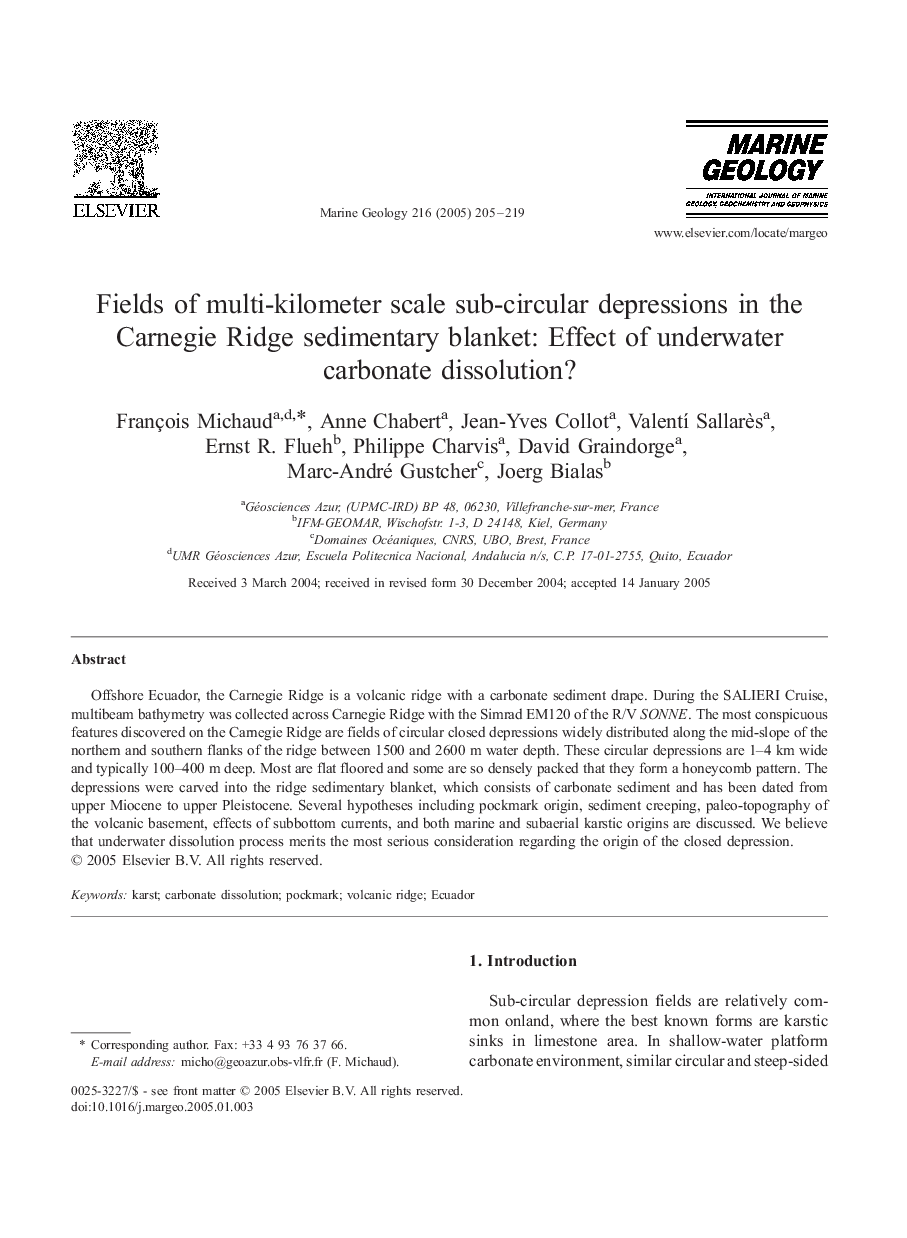| Article ID | Journal | Published Year | Pages | File Type |
|---|---|---|---|---|
| 9532697 | Marine Geology | 2005 | 15 Pages |
Abstract
Offshore Ecuador, the Carnegie Ridge is a volcanic ridge with a carbonate sediment drape. During the SALIERI Cruise, multibeam bathymetry was collected across Carnegie Ridge with the Simrad EM120 of the R/V SONNE. The most conspicuous features discovered on the Carnegie Ridge are fields of circular closed depressions widely distributed along the mid-slope of the northern and southern flanks of the ridge between 1500 and 2600 m water depth. These circular depressions are 1-4 km wide and typically 100-400 m deep. Most are flat floored and some are so densely packed that they form a honeycomb pattern. The depressions were carved into the ridge sedimentary blanket, which consists of carbonate sediment and has been dated from upper Miocene to upper Pleistocene. Several hypotheses including pockmark origin, sediment creeping, paleo-topography of the volcanic basement, effects of subbottom currents, and both marine and subaerial karstic origins are discussed. We believe that underwater dissolution process merits the most serious consideration regarding the origin of the closed depression.
Related Topics
Physical Sciences and Engineering
Earth and Planetary Sciences
Geochemistry and Petrology
Authors
François Michaud, Anne Chabert, Jean-Yves Collot, Valentà Sallarès, Ernst R. Flueh, Philippe Charvis, David Graindorge, Marc-André Gustcher, Joerg Bialas,
